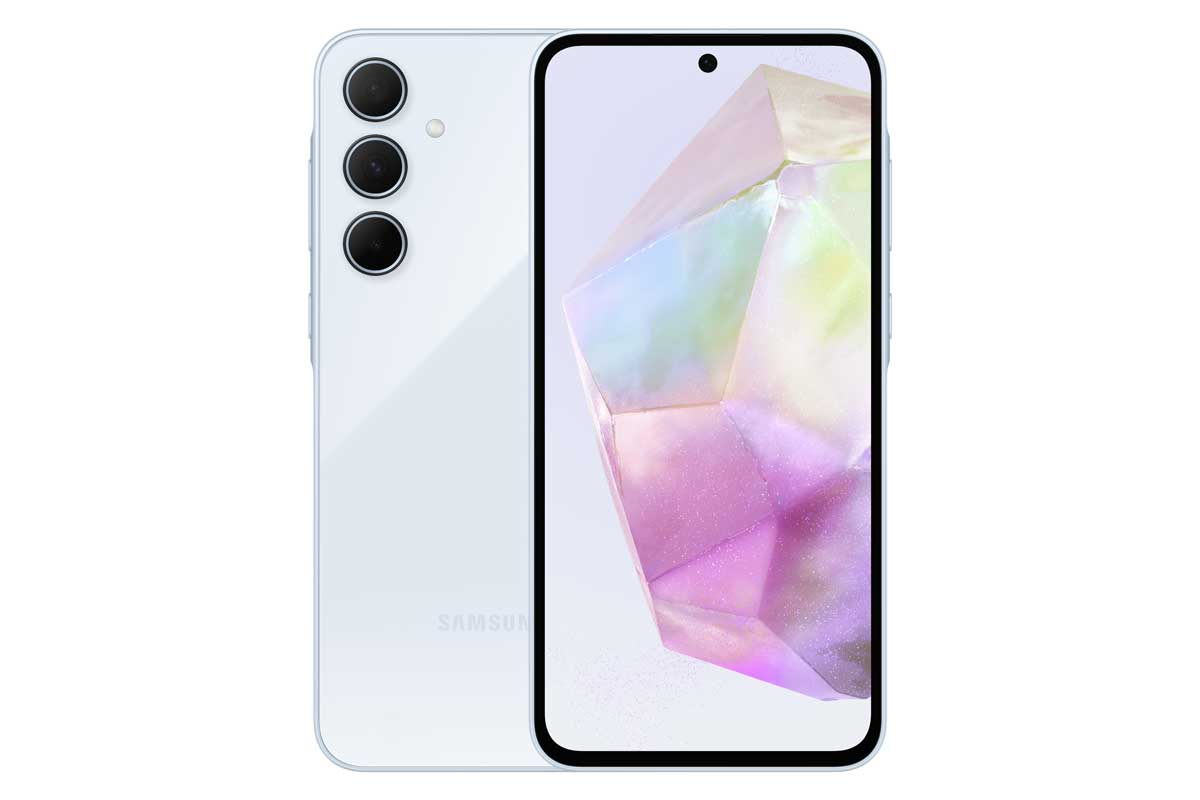The design of mid-range smartphones is marked by noticeable differences. The Xiaomi Redmi Note 13 Pro 5G has flat profiles and image sensors mounted on a panel at the back, matching the color of the back of the device. Available in black, purple and blue, it offers a modern and clean aesthetic. The Google Pixel 7a, on the other hand, features a full-width strip to integrate its image sensors. This peculiarity gives it a unique and easily recognizable look. It comes in blue, gray, coral and white, with a glass frame, adding a touch of class. The Samsung Galaxy A55 5G adopts a very classy approach where the image sensors seem to be just placed on the glass back cover, without any additional tricks. It is available in blue, dark blue, purple and lime. The profiles feature a slight dome at the standby and volume control buttons, providing a comfortable grip.
The dimensions and weight of these smartphones vary greatly. The Xiaomi Redmi Note 13 Pro 5G is very light and easy to handle. The Google Pixel 7a is more compact although it is slightly heavier than the Redmi Note 13 Pro 5G. The Samsung Galaxy A55 5G is the most impressive.
In terms of battery, the Xiaomi Redmi Note 13 Pro 5G stands out with a 5100 mAh battery, supporting 67W fast charging, but without wireless or reverse charging. This promises excellent battery life and fast recharging time. The Google Pixel 7a comes with a 4400 mAh battery, with 20W wired charging and 18W wireless charging, but without reverse charging. Its lower capacity can provide more limited autonomy, but the wireless charging capability is a practical feature. The Samsung Galaxy A55 5G has a 5000 mAh battery, and supports 25W fast charging, but without wireless or reverse charging. Its large capacity ensures good autonomy, although the charging speed is slower than that of the Redmi Note 13 Pro 5G.
What is the best screen and which is the most powerful?
In terms of displays, the Xiaomi Redmi Note 13 Pro 5G features a 6.67-inch AMOLED display with a resolution of 1220 x 2712 pixels, a maximum brightness of 1800 cd/m², and a refresh rate of 120 Hz, providing excellent display quality. The Google Pixel 7a comes with a 6.1-inch AMOLED display with a resolution of 1080 x 2400 pixels and a refresh rate of 90 Hz, which is less efficient in terms of size and frequency compared to the Redmi Note 13 Pro 5G. The Samsung Galaxy A55 5G has a 6.6-inch AMOLED display with a resolution of 1080 x 2400 pixels, a brightness of 1000 cd/m², and a refresh rate of 120 Hz, thus competing with the Redmi Note 13 Pro 5G in terms of frequency but with lower brightness.
All three smartphones offer interesting performance thanks to their processors and RAM capabilities. The Xiaomi Redmi Note 13 Pro 5G is equipped with a Qualcomm Snapdragon 7s Gen 2 processor, with 8 or 12 GB of RAM and up to 512 GB of storage, without the possibility of expanding via a micro SD card. The Google Pixel 7a uses a Tensor G2 processor with 8 GB of RAM and 128 GB of storage, also without the possibility of expanding via a micro SD card. It is the most limited in terms of internal storage. The Samsung Galaxy A55 5G is powered by a Samsung Exynos 1480, 8 GB of RAM and 8 GB of virtual RAM, with up to 256 GB of storage, expandable via a micro SD card, providing additional flexibility.
What are the image configurations and what is the connection?
For photography, the Xiaomi Redmi Note 13 Pro 5G features a 200MP main sensor, an 8MP ultrawide-angle and a 2MP macro sensor, along with a 16MP selfie sensor. This configuration puts it at the forefront for photography enthusiasts. The Google Pixel 7a has a 64MP main sensor, a 13MP ultrawide-angle sensor that can also be used for macros, and a 13MP selfie sensor. Although it is less efficient in terms of megapixels, it remains very competitive thanks to its exceptional image processing. The Samsung Galaxy A55 5G features a 50MP main sensor, a 12MP ultrawide-angle, a 5MP macro sensor, along with a 32MP selfie sensor. Its configuration remains balanced and effective in different shooting situations.
Finally, in terms of connectivity, all three smartphones support 5G and NFC. The Xiaomi Redmi Note 13 Pro 5G and Samsung Galaxy A55 5G feature Wi-Fi 6, while the Google Pixel 7a supports Wi-Fi 6E. All devices come with Bluetooth 5.2 except for the Galaxy A55 5G which has Bluetooth 5.3. None of these models have a jack except for the Xiaomi Redmi Note 13 Pro 5G, which could be a plus for some users.

“Professional food nerd. Internet scholar. Typical bacon buff. Passionate creator.”





